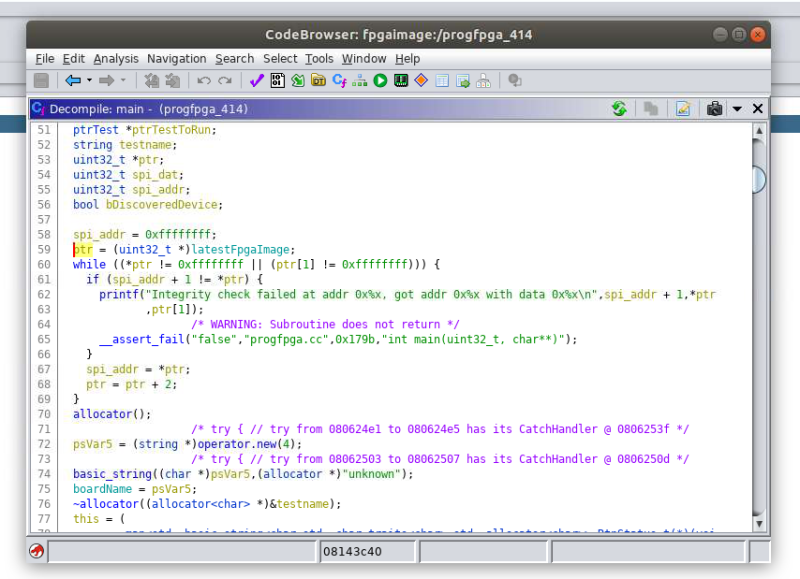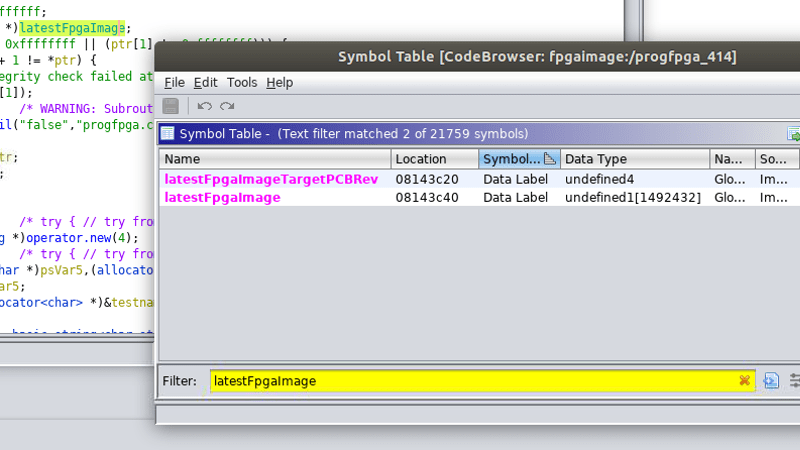When Pano Logic went out of business in 2012, their line of unique FPGA-based thin clients suddenly became a burden that IT departments didn’t want anything to do with. New and used units flooded the second-hand market, and for a while you could pick these interesting gadgets up for not much more than the cost of shipping. Thanks to considerable interest from the hacking community the prices for these boxes have climbed a bit on eBay, but they’re still a great way to get your feet wet with FPGA hacking.
Especially now, as Pano Logic fanatic [Skip Hansen] has figured out how to flash a new firmware on them without having to crack open the case and break out the JTAG or SPI programmer. For the seasoned hardware hacker that might not seem like a big deal, but if you’re new to the game or just more interested in the software side of the equation, this trick makes things considerably more accessible. Having an external programmer is still a good idea if things go south, but if you’re just looking to flash some demos and see what the hardware is capable of this is a huge quality of life improvement.
 Even if you aren’t interested in fiddling with the orphaned products of a defunct Bay Area startup, the write-up is a fascinating look at practical software reverse engineering. As it turns out, [Skip] didn’t create this new firmware update tool from scratch. He actually opened up the official Linux update utility from Pano Logic in Ghidra and was able to figure out where the firmware image actually lived inside the program. He then wrote his own tool in C which will patch the update tool with a user-supplied firmware image.
Even if you aren’t interested in fiddling with the orphaned products of a defunct Bay Area startup, the write-up is a fascinating look at practical software reverse engineering. As it turns out, [Skip] didn’t create this new firmware update tool from scratch. He actually opened up the official Linux update utility from Pano Logic in Ghidra and was able to figure out where the firmware image actually lived inside the program. He then wrote his own tool in C which will patch the update tool with a user-supplied firmware image.
After patching, all you need to do is follow the official update procedure, which Pano Logic helpfully documented in the YouTube video after the break. [Skip] mentions he didn’t find any clear license information in the official software he was fiddling with, and of course with the company out of business it’s not too likely anyone is going to come knocking down his door anyway. Still, he says the downloads for the Pano Logic updater are still floating around on the tubes out there for you to find, so he’s not distributing anyone’s code but his own in this project.
There are a number of hackers out there working to turn the Pano Logic thin clients into useful general purpose FPGA platforms, such as [Tom Verbeure], who’s incredible graphics demos got [Skip] inspired to grab his own unit off eBay. With support for USB and SDRAM added by [Wenting Zhang] while getting his FPGA GBA emulator running on the hardware, it seems there’s never been a better time to get on the Pano Logic train.















It would be nice to see one standardised hardware constraints file so hackers could Easily share and understand each others work.
Here you go:
G1: https://github.com/tomverbeure/panologic/blob/master/bringup/xilinx/top.ucf.
G2: https://github.com/tomverbeure/panologic-g2/blob/master/spinal/Pano.ucf
Everyone I know that’s been working on the Pano has been sending pull requests to Tom for any changes, but the UCF file has been pretty solid since I got involved.
Credit where credit is due: Cyrozap did the majority of the work a few years ago, but it hasn’t been updated recently. https://github.com/cyrozap/Pano-Logic-Zero-Client-G2-FPGA-Demo
Skip
I see several variants of Pano Logic on TAS (That Auction Site).
Is there a particular model to choose (or avoid)?
Good question. I’m commenting to follow this thread.
The G1 (VGA port) currently has the most support with Tom’s ray tracer, Wenting’s Veriglog boy and my Pacman, however the G2 (dual DVI ports) is a much more capable device. I’d get both.
Skip
Awesome! I did exactly as the pano_prog README suggested, and am now watching checkered shiny goodness generated by my sadly neglected G1. Thanks for a great Friday, Skip and Tom!
The company I work for had hundreds of these, I sent as many as I could to anyone paying the shipping charge. I think I saved more then 200 units from the dump. (Sadly I am out of stock) I only made comments on the HaD forms and sent them off as soon as I was able with my only hope that someday this very thing would happen. Some folks expressed a desire to do this very thing, flash and play with the unit as a whole. Others shucked the case, desoldered the chips and used them for something else entirely.
So much progress has happened incrementally over the years since Pano Logic folded, glad to see this post. At my office we still joke about them because they also resemble a prop used in a Dr Who episode, a seemingly useless black box that just showed up one day and after a long time they come to life.
When I sent you the extra bucks (way back when you were parting them out) I meant for you to keep the change for a coffee or something; not send me more!